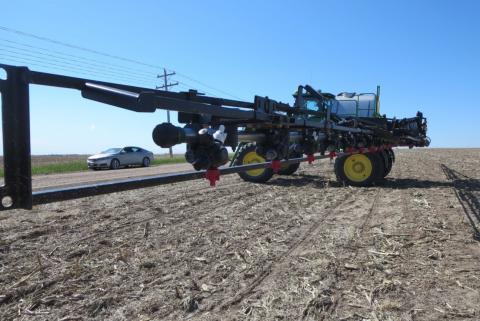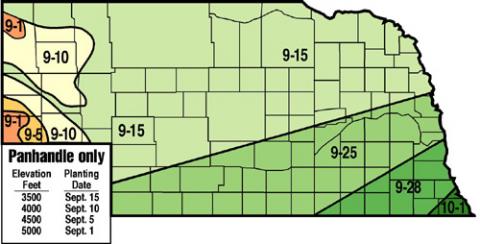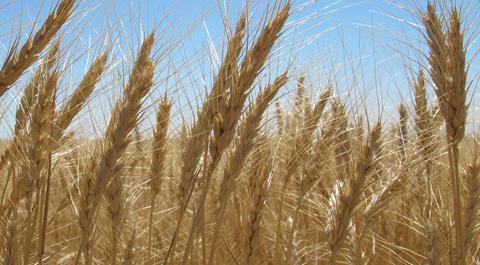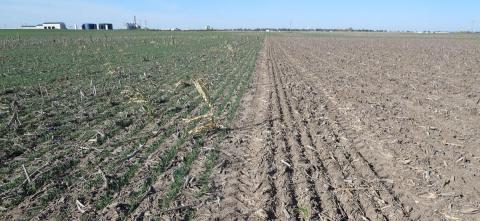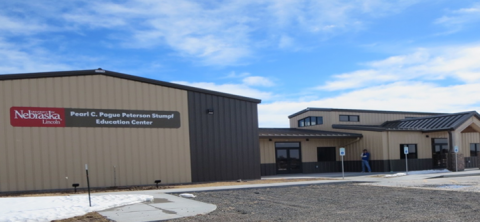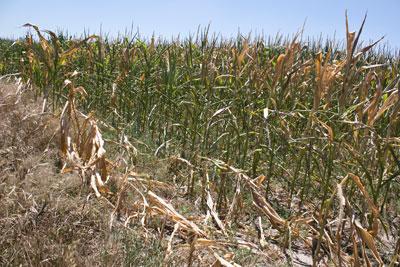Sprayer Clinic on New Dicamba and Enlist Products Nov. 15
October 10, 2017
A sprayer clinic will provide more information on applying new dicamba formulations in soybeans and corn. In addition a variety of sprayers will be displayed and technicians will be available to discuss the features of each. The event will be held at the University of Nebraska College of Technical Agriculture in Curtis,
How Winter Wheat Seeding Date Can Have a Major Effect on Yields
September 1, 2017
The recommended seeding dates for Nebraska's winter wheat vary substantially from one end of the state to the other — from September 1 in the extreme northwest to October 1 in the southeast tip — and have been proven and verified through years of research and farmer experience.
Recap of 2017 Western Nebraska Wheat Crop and Implications for 2018
August 31, 2017
Some growers in western Nebraska had their best winter wheat yields ever in 2017 while others had some of their lowest yields. Moisture availability and disease were among the factors. See breakdowns by area.
Wheat Seeding Delay? Here’s How to Compensate
August 30, 2017
Even when you plan to seed winter wheat at the optimum time, weather, equipment breakdown, or other problems may prevent it. If you're in this situation, increasing your seeding rate, using narrow row spacing, and applying other practices described here can help you achieve a successful wheat stand despite the challenges.
Wheat Update from the Henry J. Stumpf International Wheat Center
August 29, 2017
Now in its third year of wheat research and variety trials, the Henry J. Stumpf International Wheat Center near Grant conducts research on rainfed production in western Nebraska. While the 2017 trial was badly damaged by hail, this recap looks at yield trends from all three years.
Tell Us about Your Dicamba Use and Suspected Injury in Soybean
August 18, 2017
Nebraska Extension educators and specialists would like to hear from growers and agribusiness about their experiences with dicamba this season. Information can be shared via an online survey or by contacting them directly with the email provided.
Estimating the Full Value of Crop Residue
August 11, 2017
If you're considering cutting drought-stressed corn or sorghum for silage, you might want to take a second look at its nutrient value to the next crop if left in the field.
Should You Hay or Cut Silage from Drought-Damaged Corn Fields
July 28, 2017
Drought conditions across much of Nebraska will limit grain yields in dryland corn this year, leading growers to look at other options for harvesting value from these fields. In some cases, harvesting this plant material may contribute to nutrient and water removal from the soil and may not be the best solution for your rotation or cropping system.


